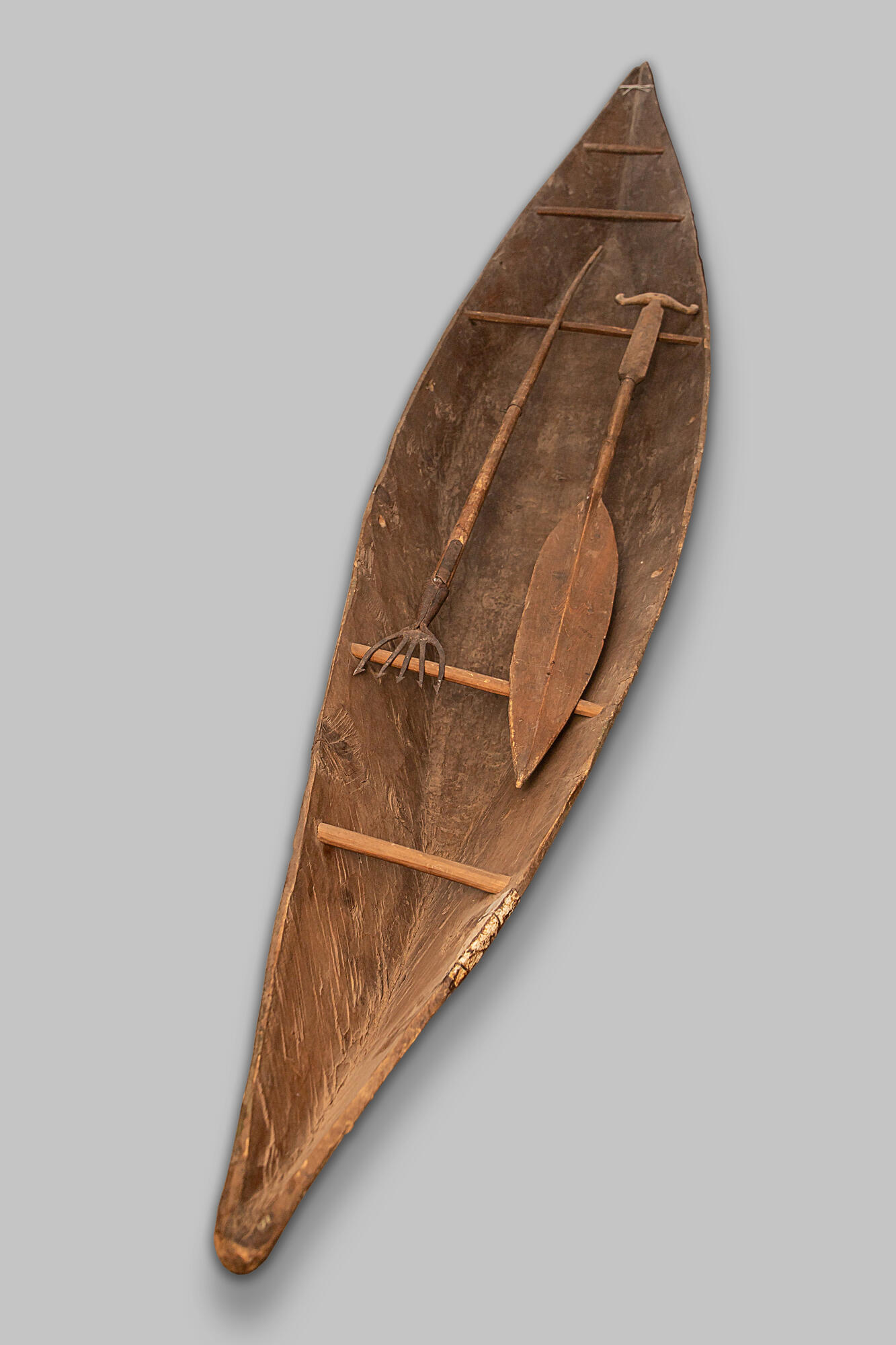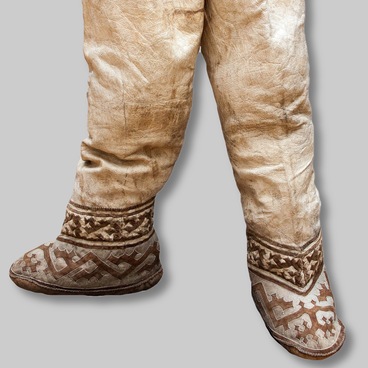Dugout canoe is a part of the ethnographic collection of the Tobolsk Provincial Museum. The Selkups, an indigenous small-numbered people living in the North of Western Siberia, moved along the Siberian rivers. Another name for the boat in the Selkup language is ‘oblas’. These boats were narrow and long made from a single tree trunk. Most often, the Selkups used aspen, since its wood only becomes stronger when wet, but if the boat had to be often carried on land, then cedar was used. Such wood was light and practically did not get wet in water. Trunks for boats were prepared in the winter, and they began to make a boat in the spring, with the arrival of heat.
It was not easy to make a good dugout, so only the men were engaged in its construction. Depending on the size, it was supposed to accommodate from one or two people to ten. The bark was removed from the selected aspen, and then the trunk was appropriately marked. Having formed the bow and stern, they began to hollow out the wood. When the dugout took shape, and the sides were the right thickness, they began to diverge them. In order to steam the wood, hot water was poured into the future boat. If it was not possible to heat the water, then stones heated over a fire were used. The most risky way is to set the boat on a trestle over the fire and pour water into it. Such steaming had to be constantly monitored so as not to burn the wood.
Struts made of spruce knots were installed inside the future boat. As the wood steamed, the knots were replaced with longer ones. When the sides were diverged sufficiently, holes were made in them, to which frames, i.e. transverse stiffeners, were attached by bast, rope, or birch bark. After that, the almost finished boat was tarred. It was rubbed with a mixture of soot with pine or fir resin, so that the dugout glided through the water noiselessly and did not get wet.
The dugout was controlled using a pole and oar from 1 to 1.5 meters long made of pine, spruce, or cedar. Relatively short oars with a rounded blade were used to push off from the shore. Usually the man steered the boat from the stern, while the women and children rowed. Men’s oars differed from women’s by their larger size, more massive handles, and the shape of the blade. The upper part of the handle of women’s oars was designed in the form of a hexagon and decorated with carvings, with the sign of family affiliation often applied. Sometimes the groom made special oars as a gift to their brides.
It was not easy to make a good dugout, so only the men were engaged in its construction. Depending on the size, it was supposed to accommodate from one or two people to ten. The bark was removed from the selected aspen, and then the trunk was appropriately marked. Having formed the bow and stern, they began to hollow out the wood. When the dugout took shape, and the sides were the right thickness, they began to diverge them. In order to steam the wood, hot water was poured into the future boat. If it was not possible to heat the water, then stones heated over a fire were used. The most risky way is to set the boat on a trestle over the fire and pour water into it. Such steaming had to be constantly monitored so as not to burn the wood.
Struts made of spruce knots were installed inside the future boat. As the wood steamed, the knots were replaced with longer ones. When the sides were diverged sufficiently, holes were made in them, to which frames, i.e. transverse stiffeners, were attached by bast, rope, or birch bark. After that, the almost finished boat was tarred. It was rubbed with a mixture of soot with pine or fir resin, so that the dugout glided through the water noiselessly and did not get wet.
The dugout was controlled using a pole and oar from 1 to 1.5 meters long made of pine, spruce, or cedar. Relatively short oars with a rounded blade were used to push off from the shore. Usually the man steered the boat from the stern, while the women and children rowed. Men’s oars differed from women’s by their larger size, more massive handles, and the shape of the blade. The upper part of the handle of women’s oars was designed in the form of a hexagon and decorated with carvings, with the sign of family affiliation often applied. Sometimes the groom made special oars as a gift to their brides.



